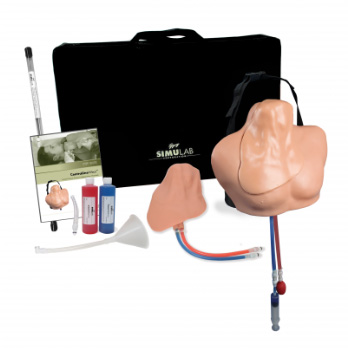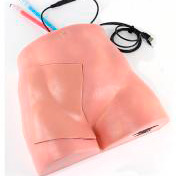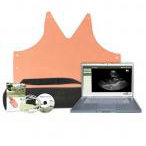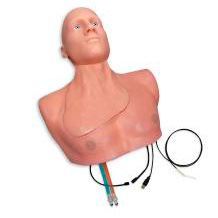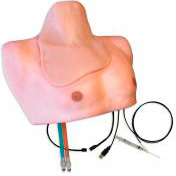Description
Clinically Relevant Anatomy
CentraLineWear features all the same clinically relevant landmarks and anatomy as CentraLineMan. Learners can practice performing full catheterization using ultrasound guided or blind/landmark insertion approaches at the subclavian, supraclavicular, and internal jugular access sites. This central line simulator includes clinically relevant internal and external landmarks that are palpable and or visible under ultrasound. These include:
- Upper torso and neck
- Trachea
- Clavicle
- Sternal notch
- Sternocleidomastoid muscle
- Sternal and clavicular heads of the sternocleidomastoid muscle
- Manubrium
- Lateral border of the first rib
- Superior vena cava
- Upper lung
- Vascular Anatomy including: External Jugular, Internal Jugular, Subclavian, Axillary, and Brachiocephalic Veins; Carotid and Subclavian artery
Central Line Skill Development
- Practice full central venous catheterization using ultrasound guided or blind/landmark insertion approaches at the subclavian, supraclavicular, and internal jugular access sites.
- Practice placing patient in appropriate position per access site standards
- Gain experience in identifying and selecting appropriate access site based on patient anatomical variations
- Practice use of ultrasound for:
- Developing psychomotor skills required for obtaining visualization during cannulation
- Detecting anatomical variations
- Distinguishing vessels
- Visualizing arterial pulse and venous compression
- Identifying anatomical location of target vessel
- Visualizing needle cannulation of target vessel in transverse view
- Visualize threading of guidewire in longitudinal axis view
- Visualizing catheter placement
- Reducing rate of mechanical complications due to anatomical variances such as: pneumothorax or arterial puncture.
- Improving first cannulation success and decreasing needle passes
- Practice identifying unsuccessful vessel access by fluid feedback representing arterial puncture
Components
- CentraLineWear Torso
- 2 Replaceable Tissues (CLMT-50)
- 25 Non-sterile Guidewires (NSG-10)
- Vessel Filling Port
- Fill Line
- Pulse – Hand Pump
- Venous Pressure Regulator
- Carrying Case
- Arterial Fluid (red)
- Venous Fluid (blue)
- User’s Guide
Dimensions
- 18″ h; 27″ w; 8.5 ” d (carrying case)
- Weight: 27 lbs

